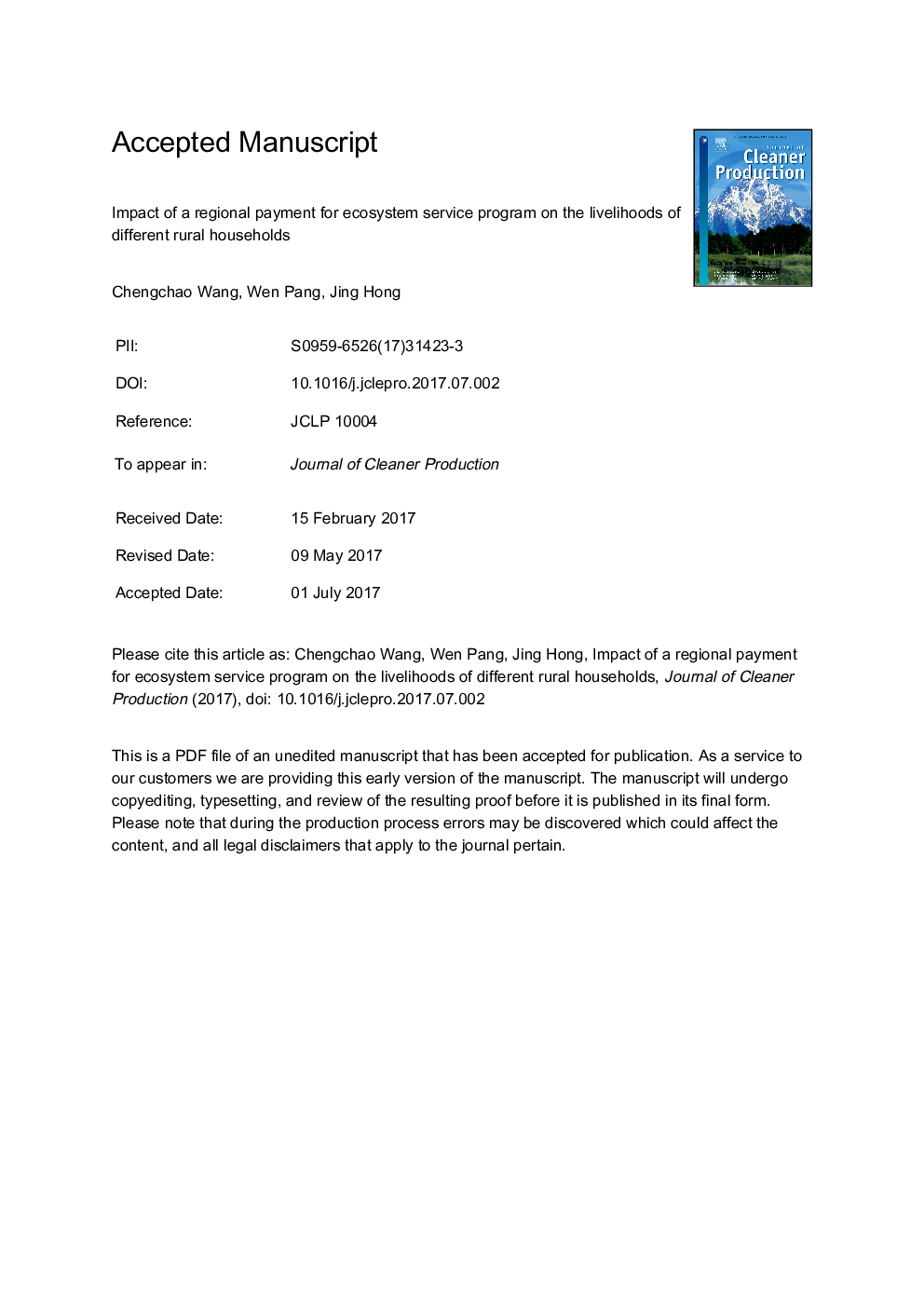| Article ID | Journal | Published Year | Pages | File Type |
|---|---|---|---|---|
| 5480513 | Journal of Cleaner Production | 2017 | 40 Pages |
Abstract
Payments for ecosystem services (PES) is popular despite little empirical evidence of their effectiveness in poverty alleviation. Using survey data on rural households' livelihoods in Changting County, Southeast China, we evaluate the comprehensive and dynamic livelihood impacts of PES on participants and nonparticipants. Results show that PES programs have been beneficial for participants. However, negative impacts have been found for nonparticipants. In detail, the participants' livelihood assets are greatly consolidated through a series of policies and institutions. These institutions have empowered participants to access to natural resources and excluded the others. Participants' livelihood strategies and sustainable livelihoods are further shaped and mediated by these institutions. Instead, nonparticipants are excluded from the project and prohibited to access to natural resources. Their livelihood assets and strategies are negatively influenced by resources relocation. Given the minimal trickle-down benefits and remarkable negative impacts, the nonparticipants' livelihoods are overall adversely affected by the project. Our study highlights the importance of disaggregated household analysis and dynamic perspective in evaluating livelihood impacts of PES. Policy strategies should consider household heterogeneity, livelihood framework and dynamic impacts in related environmental and development programs.
Keywords
Related Topics
Physical Sciences and Engineering
Energy
Renewable Energy, Sustainability and the Environment
Authors
Chengchao Wang, Wen Pang, Jing Hong,
